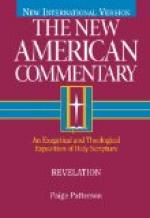The last temptation teaches us both the nature of Christ’s kingdom and the means of its establishment. It is a rule over men’s hearts and wills, swaying them to goodness and the exclusive worship and service of God. That being so, the way to found it follows of course. It can only be set up by suffering, utter self-sacrifice, gentleness, and goodness. Christ is King of all because He is servant of all. His cross is His throne. His realm is of hearts softened, cleansed, made gladly obedient, and growingly like Himself. For such a king, weapons of force are impossible, and for His subjects the same law holds. They have often tried to fight for Christ with the Devil’s weapons, to make compliance with him for ends which they thought good, to keep terms with evil, or to adopt worldly policy, craft, or force. They have never succeeded, and, thank God! they never will.
That duel was fought for us. There we all conquered, if we will hold fast by Him who conquered then, and thereby taught our ‘hands to war’ and our ‘fingers to fight.’ The strong man is bound. The spoiling of his house follows of course, and is but a question of time.
THE SPRINGING OF THE GREAT LIGHT
’Now when Jesus had heard that John was cast into prison, He departed into Galilee; 13. And leaving Nazareth, He came and dwelt in Capernaum, which is upon the sea coast, in the borders of Zabulon and Nephthalim: 14. That it might be fulfilled which was spoken by Esaias the prophet, saying, 15. The land of Zabulon, and the land of Nephthalim, by the way of the sea, beyond Jordan, Galilee of the Gentiles; 16. The people which sat in darkness saw great light; and to them which sat in the region and shadow of death light is sprung up.’—MATT. iv. 12-16.
Though the narrative of the Temptation is immediately followed by the notice of Jesus’ return to Galilee, there was a space between wide enough to hold all that John’s Gospel tells of the gathering of the first disciples, the brief stay in Galilee, the Jerusalem ministry, and the journey through Samaria. John i. 43 refers to the same point of time as verses 12-16 of this chapter. It is rash to conclude Matthew’s ignorance from his silence, and it is plain, from his own words, that he did not suppose that the return to Galilee followed the Temptation as closely in time as it does in his narrative. For he does link the Temptation to the Baptism immediately, by ’Then was Jesus led up of the Spirit’ (verse 1), and so some interval of time must be allowed, during which Jesus left the wilderness, and went to some place where He could hear of John’s imprisonment. A gap is necessary. Its extent is not indicated, nor are the reasons for silence as to its contents. But we may as reasonably conjecture that Matthew’s eagerness to get to his main subject, the Galilean ministry, led him to regard the short visit to Jerusalem as an episode from which little came, as put his silence down to a very improbable ignorance. The same explanation may account for the slight mention made of His ‘leaving Nazareth,’ of which Luke has given the memorable story.




